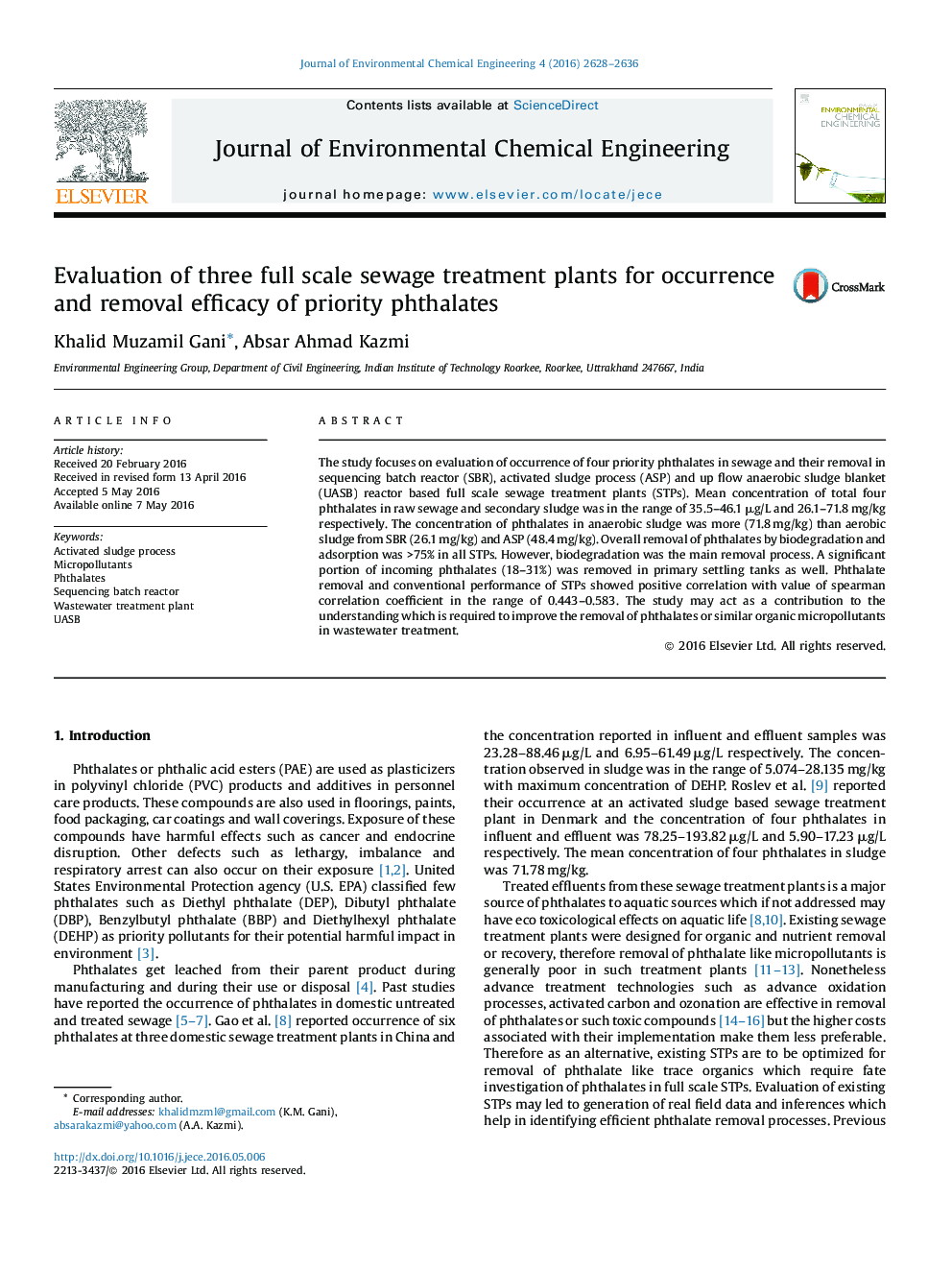| کد مقاله | کد نشریه | سال انتشار | مقاله انگلیسی | نسخه تمام متن |
|---|---|---|---|---|
| 221526 | 464260 | 2016 | 9 صفحه PDF | دانلود رایگان |
• Fate of four phthalates examined in three full-scale sewage treatment plants.
• Primary settling tanks contribute 18–31% to overall removal of phthalates.
• Biodegradation of phthalates was highest in nutrient removal based SBR.
• Positive correlation between conventional performance and phthalate removal.
The study focuses on evaluation of occurrence of four priority phthalates in sewage and their removal in sequencing batch reactor (SBR), activated sludge process (ASP) and up flow anaerobic sludge blanket (UASB) reactor based full scale sewage treatment plants (STPs). Mean concentration of total four phthalates in raw sewage and secondary sludge was in the range of 35.5–46.1 μg/L and 26.1–71.8 mg/kg respectively. The concentration of phthalates in anaerobic sludge was more (71.8 mg/kg) than aerobic sludge from SBR (26.1 mg/kg) and ASP (48.4 mg/kg). Overall removal of phthalates by biodegradation and adsorption was >75% in all STPs. However, biodegradation was the main removal process. A significant portion of incoming phthalates (18–31%) was removed in primary settling tanks as well. Phthalate removal and conventional performance of STPs showed positive correlation with value of spearman correlation coefficient in the range of 0.443–0.583. The study may act as a contribution to the understanding which is required to improve the removal of phthalates or similar organic micropollutants in wastewater treatment.
Journal: Journal of Environmental Chemical Engineering - Volume 4, Issue 3, September 2016, Pages 2628–2636
